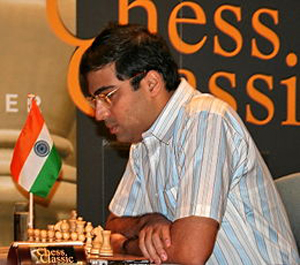Who invented chess? Where did it come from? Viswanathan Anand, world chess champion and high-profile guest essayist for Time magazine, noted that the ownership of the game has been claimed by the Russians, Chinese, Ukranians, Arabs, Iranians, Turks, Spaniards and Greeks.
“My own view,” he said, in his deeply-researched Time essay titled, ‘The Indian Defence,’ is that the sport belongs to everybody who plays it, but the question of its origins is easy enough to answer: chess comes from India.”
Anand traces the roots of the game back to ancient Indian history and epics, and insists that the sport travelled westward out from India. Some of the oldest references to the sport are found in ancient Indian texts. In the monumental epic Ramayana, which according to some sources was orally transmitted some time between 750 bc and 500 bc, the demon King Ravana invents chess to amuse his wife Mandodari. An intelligent mind, Mandodari promptly beats the King. Anand says his grandmother told him this story at age six when he began playing the game, long before he actually researched it.
Chess is featured also in the Arthashastra (3rd century bc), perhaps the world’s oldest political treatise. Its author, Chanakya, describes chess as a game of war strategy, known as ‘chaturanga,’ that was played on an eight by eight or 64-square board, just like today. Anand expresses a view that perhaps, chess is the world’s first virtual war game.
It is interesting to note that the Arabic, Persian, Turkish, Greek, Portuguese and Spanish words for chess are all derived from the ancient Indian ‘chaturanga,’ which means “four divisions of the military” – infantry, cavalry, elephants and chariots. Moreover, only India had in its cavalry all three animals – horse, camel and elephant – represented by the knight, bishop and rook.
In ancient tombs pieces are found which archaeologists assure us constituted a form of chess. A modern version came out of India in the seventh century ad. Anand reflects: “I believe chess travelled westward out of India through what is now Afghanistan into Persia where it arrived during the Sassanid Empire – an Indian King is believed to have sent a chessboard as a gift to his Persian counterpart.
“At the royal court in Ctesiphon, the game became known as chatrang. The Arabs learnt it (they called it shatranj) when they conquered Persia in the 6th century ad and carried it across northern Africa. They introduced the game to Europe when the Moors crossed the Mediterranean into the Iberian peninsula. It grew immensely popular in Moorish Spain, where it was played in the street – a practice still seen in parks and other squares in cities around the world.”
Anand continues by telling us something very interesting: “Iberia underwent a major change after the 15th century reconquista by Catholic forces led by Queen Isabella I – and chess changed, too. On the board, the queen became the most important piece; the bishop replaced the camel and flanked the king and the queen. Modern chess is still played by rules formalized under Isabella’s reign. Around this time, the Spanish player Luis Ramirez de Lucena wrote what may have been the first book about chess theory – the Lucena Position remains to this day the cornerstone of rook and pawn endings.”
The world champion theorizes that ironically, Russia may have been one of the last places in the Old World to receive chess, likely through the Volga trade route. It became popular there during the reign of Peter the Great. But the late introduction didn’t stop the Russians from becoming the game’s superpower, and “it wasn’t until 2000 that an Indian – yours truly – finally brought the title of world chess champion back to the land of the sport’s birth.”
Anand, who defends his championship title in October, concludes his essay with the folowing words: “I like to think that the arc of my own career has in some ways mirrored the journey of chess. I learned to play in India, then moved to Spain so I could play the European circuit, and won my first world championship (the Juniors ) in Iran. It’s nice when your place in chess history has something to do with the bigger picture.”
There has been much comment about a story recounted by Anand during his first international tournament in Italy in 1991. He was 21 at the time when a Russian grandmaster “condescendingly” told him he could be a coffee-house player (club player ) at best, because he had not been tutored in the Soviet School of Chess, which at the time dominated the sport. Anand said that with the arrogance of youth he thought to himself, “But didn’t we Indians invent chess? Why shouldn’t I have my own route to the top of the sport?”
Perhaps that remark lit the fire that has burned so brightly for Anand, and energized him to become world champion. Today, India has one of the world’s leading chess schools, having produced the current world champion and the second highest ranked female player in the world.





